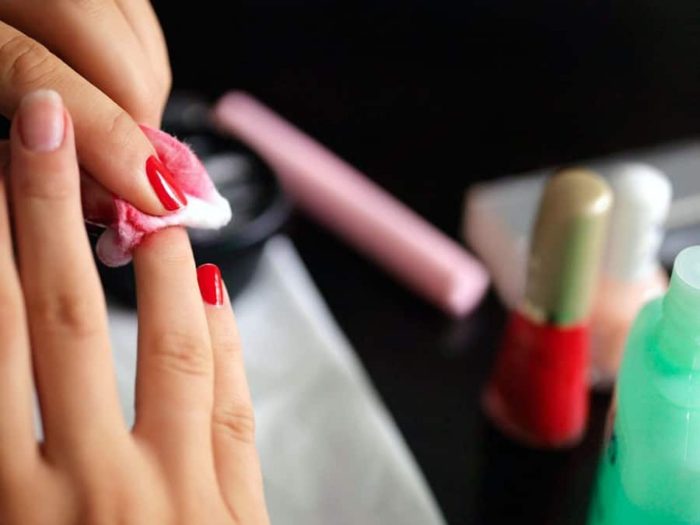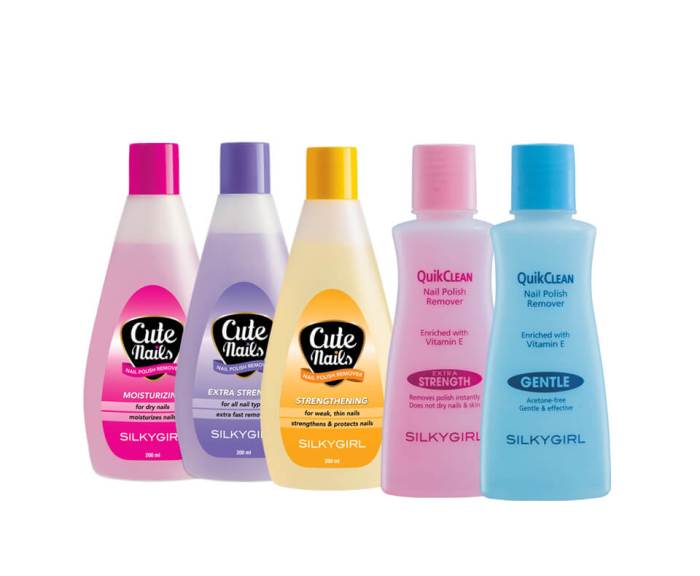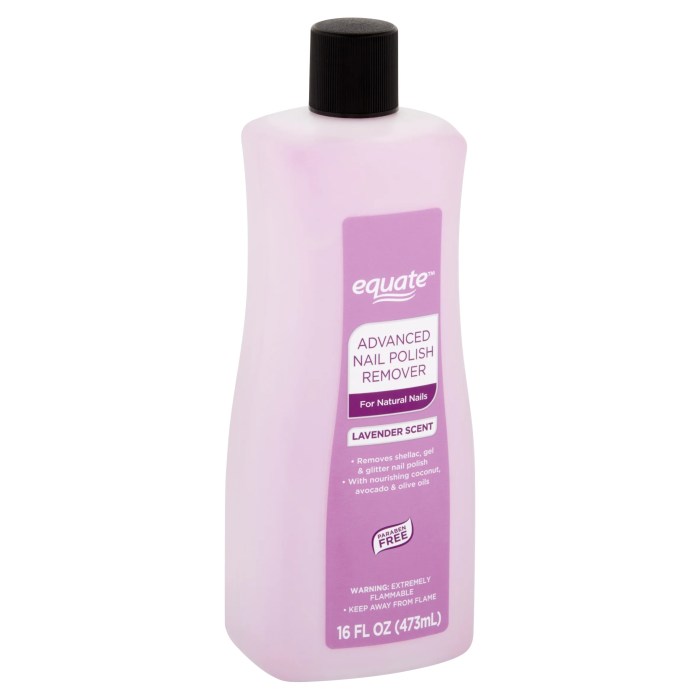Dip Nail Polish Remover A Comprehensive Guide
Dip Nail Polish Remover: A Comprehensive Guide

Source: weheartnails.com
Dip nail polish remover – Removing dip powder nails can be a delicate process, requiring the right tools and techniques to avoid damaging your natural nails. This guide provides a detailed overview of dip powder removers, safety precautions, effective removal methods, and aftercare tips to ensure a healthy and beautiful manicure experience.
Dip Nail Polish Remover Product Overview

Source: silkycosmetics.com
The market offers various dip powder removers, primarily categorized by their primary solvent: acetone-based and acetone-free. Acetone-based removers are generally faster and more effective, while acetone-free options are gentler on the skin and nails but may require longer soaking times. Key ingredients commonly found include acetone (in acetone-based removers), ethyl acetate, propyl acetate, and various conditioning agents designed to minimize dryness.
Acetone-based removers offer superior dissolving power due to acetone’s strong ability to break down the dip powder polymer. However, they can be drying to the skin and nails and may have a strong, pungent odor. Acetone-free removers, often employing alternative solvents, are less harsh but may require more time and effort for complete removal. The choice depends on individual preferences and sensitivity.
Proper application involves several steps: First, carefully buff the top layer of the dip powder to create a rough surface, allowing better penetration of the remover. Next, soak cotton pads in the remover and firmly secure them to each nail with aluminum foil. Allow sufficient soaking time (typically 15-30 minutes, depending on the remover and nail thickness). Gently push and scrape away the softened dip powder with a cuticle pusher or orangewood stick.
Removing dip powder nail polish requires a specialized remover, often acetone-based, to safely lift the product without damaging the nail bed. Choosing the right remover is crucial, especially when considering current trends; to see what colors are popular right now, check out this helpful guide on what color nail polish is in right now. After removing your dip powder, you can then confidently choose a trendy color for your next manicure.
Finally, gently file away any remaining residue and moisturize your nails.
Safety Precautions and Handling of Dip Powder Removers

Source: walmartimages.com
Dip powder removers, especially acetone-based ones, pose potential hazards. Prolonged or direct skin contact can lead to irritation, dryness, and even allergic reactions. Inhalation of fumes can cause respiratory irritation, headaches, and dizziness. Therefore, proper handling and safety measures are crucial.
Always work in a well-ventilated area to minimize inhalation of fumes. Wear gloves to protect your skin from direct contact. Store removers in a cool, dry place, away from heat sources and direct sunlight, and out of reach of children. In case of skin contact, wash the affected area thoroughly with soap and water. If irritation persists, consult a doctor.
Adequate ventilation is paramount. Using a well-ventilated room or working near an open window is recommended. Consider using an exhaust fan to further improve air circulation. In enclosed spaces, ensuring adequate fresh air intake is essential.
SDS Summary (Illustrative): Product Name: Generic Dip Powder Remover; Hazard Classification: Flammable liquid and vapor, skin irritant; Precautions: Wear gloves, work in a well-ventilated area, avoid contact with eyes and skin; First Aid: Rinse skin with water; In case of inhalation, move to fresh air.
Comparison of Brands and Products
The market offers a wide range of dip powder removers, varying in price, ingredients, and user reviews. Price points typically range from budget-friendly options to premium brands with added conditioning properties. Key features to consider include the type of solvent (acetone or acetone-free), the presence of moisturizing ingredients, and the overall effectiveness in removing dip powder without damaging the natural nail.
| Brand | Price (Approximate) | Key Ingredients | User Reviews (Summary) |
|---|---|---|---|
| Brand A | $10 | Acetone, Ethyl Acetate | Effective, but drying |
| Brand B | $15 | Acetone-free formula, moisturizing oils | Gentle, but slower removal |
| Brand C | $12 | Acetone, Propyl Acetate, Vitamin E | Effective and less drying |
| Brand D | $20 | Acetone-free, plant-based solvents | Slow removal, but gentle on nails |
Techniques and Methods for Dip Powder Removal
Several techniques exist for removing dip powder, each with its own advantages and disadvantages. Soaking is a common method, offering gentler removal but requiring more time. Filing, either manually or with an e-file, allows for quicker removal but increases the risk of nail damage if not done carefully. E-filing, while faster, requires expertise to prevent over-filing and injury.
The soaking method involves buffing the top coat, soaking nails in remover-saturated cotton pads wrapped in foil, and gently removing the softened powder. This method minimizes the risk of damage but requires patience.
- Dip Powder Remover
- Cotton Balls or Pads
- Aluminum Foil
- Cuticle Pusher or Orangewood Stick
- Nail File
- Nail Buffer
- Cuticle Oil
Aftercare and Nail Health
Proper aftercare is essential to maintain nail health after dip powder removal. Moisturizing is crucial to replenish hydration lost during the removal process. Strengthening treatments can help repair any potential damage and promote healthy nail growth. Avoiding harsh chemicals and providing adequate hydration are vital for preventing future damage.
Regular moisturizing with cuticle oil helps keep nails hydrated and prevents brittleness. Using nail strengtheners can aid in repairing weakened nails. Avoiding excessive use of harsh chemicals and maintaining a balanced diet contribute to overall nail health.
Environmental Impact of Dip Powder Removers
The environmental impact of dip powder removers and their packaging stems from the solvents used and the disposal of materials. Acetone, a common solvent, is volatile and contributes to air pollution. Packaging materials, often plastic, contribute to waste accumulation. However, there are steps to mitigate the impact.
Choosing acetone-free removers reduces the volatile organic compound emissions. Opting for products with recyclable or biodegradable packaging minimizes waste. Responsible disposal of used removers and materials, according to local regulations, is crucial. Reducing the frequency of dip powder manicures also contributes to a smaller environmental footprint.
Illustrative Examples of Nail Appearance
Healthy nails before dip powder application appear smooth, even in color, and free of ridges or discoloration. After proper removal using the soaking method, nails should retain their natural shape and color, though they may appear slightly softer. Damaged nails, however, might show signs of thinning, brittleness, or discoloration. Over-filing can result in a rough, uneven surface.
The texture and appearance after different removal methods will vary. Soaking generally leaves nails smoother than filing, which may result in a slightly rougher surface depending on the technique used.
FAQ Corner: Dip Nail Polish Remover
Can I use regular nail polish remover on dip powder?
No, regular nail polish remover is not effective on dip powder and may damage your nails.
How long does it take to remove dip powder?
Removal time varies depending on the method used and the thickness of the dip powder application. Soaking methods typically take 15-30 minutes, while e-filing can be quicker.
Is e-filing safer than soaking?
Both methods have pros and cons. E-filing can be faster but requires skill to avoid damaging the nail plate. Soaking is gentler but can be time-consuming.
What should I do if I experience skin irritation?
Stop using the product immediately and wash the affected area thoroughly with soap and water. If irritation persists, consult a doctor.















